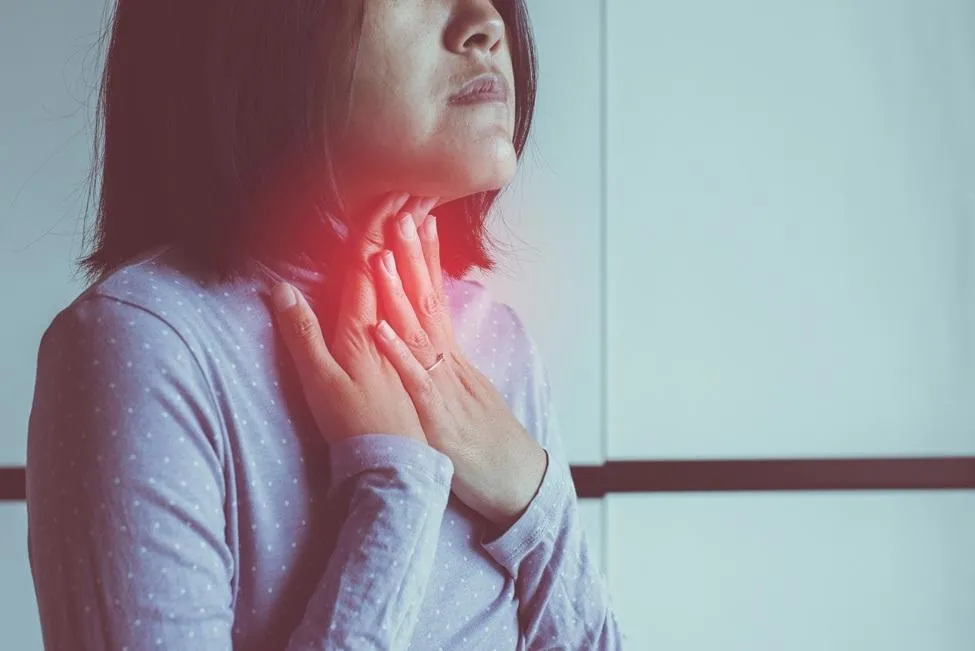
What Is Zenker’s Diverticulum? Symptoms, Causes & Treatment
Zenker’s diverticulum is a pouch that forms in the back of your throat. When you eat, food can become stuck in the pouch, leading to regurgitation and bad breath. The condition occurs when the muscle between your esophagus and throat doesn’t relax, preventing food from moving down to the stomach.
Food regurgitation is an issue with many conditions, including acid reflux. Zenker’s diverticulum is one potential cause that’s often considered. It also presents with difficulty swallowing or a sensation of something stuck in the throat.
But what is Zenker’s diverticulum? Why does it occur? And what is the treatment? Join The Functional Gut Clinic as we answer your questions.
What is Zenker’s Diverticulum?
The term diverticulum refers to a pouch or pocket-like structure. Most often, it occurs in the colon when the inner lining of the intestine protrudes outwards.
Zenker’s diverticulum is a special case. It forms at the lowest part of the throat (pharynx), where it merges with the esophagus. The pocket is typically located on the back wall of the pharynx and can enlarge significantly over time.
The condition is relatively rare and is most common among older people, especially those aged 70-years and older. It affects less than 0.01% of the population. Nobody knows the exact causes, but it seems to be connected to an increase pressure in the esophagus.
Zenker’s Diverticulum Symptoms
The most common symptom of Zenker’s diverticulum is difficulty swallowing. It is experienced in 80-90% of cases. Food easily becomes lodged in the pocket, which can close up the throat and esophagus, giving that sensation of not being able to swallow.
But that’s not the only symptom. Other symptoms include:
Regurgitation of undigested food – often hours after eating
Chronic cough – particularly after eating
Halitosis (bad breath) – due to trapped food in the pouch
Gurgling sounds in the neck - during swallowing
Aspiration – food or liquids entering the airway
Hoarseness or voice changes
Weight loss – in more advanced or chronic cases
Neck mass – sometimes palpable and may increase in size when coughing or straining
Sensation of a lump in the throat (globus sensation)
Causes of Zenker’s Diverticulum
Swallowing might feel like second nature. However, it’s an extremely complicated process involving more than thirty muscles. As you swallow, several muscles work in sync to move the food or liquid out of the mouth, down the throat, and into the esophagus.
Zenker’s diverticulum occurs just above the cricopharyngeal (CP) muscle – where your esophagus and pharynx join. In some people, increased pressure in the esophagus causes the CP muscle to malfunction.
A pouch begins to form as the pressure stretches the lining, gradually worsening over time. Often, there is an initial tear in the esophagus, which allows the lining to protrude outward. Gastroesophageal reflux disease (GERD) is linked to the condition, as it can degrade the esophageal lining and increase pressure in the region.
Zenker’s Diverticulum Diagnosis
Zenker’s diverticulum is often mistaken for other conditions, including GERD or esophageal achalasia. It's also important to differentiate its symptoms from those of gastroparesis, where delayed stomach emptying can lead to nausea, vomiting, and early satiety. People may not realize what the issue is until they develop aspiration pneumonia (a severe bacterial infection due to inhaling regurgitated food).
To make a diagnosis of Zenker’s Diverticulum, your doctor will initially take your history and perform a physical examination. To help diagnose Zenker’s diverticulum, your healthcare provider may recommend the following tests:
Esophageal manometry – Measures the pressure and coordination of muscle contractions in your esophagus to assess how well it’s functioning.
Barium swallow (esophagram) – A type of X-ray where you swallow a barium solution which can show the shape and movement of your esophagus in real time.
Upper endoscopy (esophagogastroduodenoscopy) – Involves inserting a thin, flexible tube with a camera down your throat to examine the inside of your esophagus and rule out other conditions.
These tests can help differentiate between GERD, achalasia, Zenker’s diverticulum, and other potential causes.
Treatment Options
Zenker’s diverticulum isn’t dangerous in most cases. Mild cases are usually treated with a “wait and see” approach. Your doctor will not want to operate or treat the condition if it isn’t affecting your quality of life.
That being said, you might be advised to change your eating habits. Chewing more slowly, taking smaller bites, and drinking between bites can reduce the risk of food getting stuck in the pouch and aspiration pneumonia.
If the condition continues to worsen, more intensive options can be considered.
Surgical Treatment
Moderate to severe cases of Zenker’s diverticulum typically require surgical intervention. There are two primary options:
Endoscopy. In this procedure, the surgeon threads a thin, tube-like instrument with a camera down your throat. It can find the diverticulum and make small incisions to repair the damage or remove the pouch.
Open Surgery. More severe cases, where the pouch is large, requires an incision directly into the neck. Known as a diverticulectomy. This involves separating the diverticulum from your esophageal wall which is then either removed or inverted. The procedure has a high success rate.
Concerned About Regurgitation or Swallowing Issues?
If you're experiencing food regurgitation, persistent coughing after meals, or difficulty swallowing, Zenker’s diverticulum could be one of several possible causes. Understanding your symptoms is the first step toward effective treatment.
Learn more about regurgitation symptoms and when to seek help.

